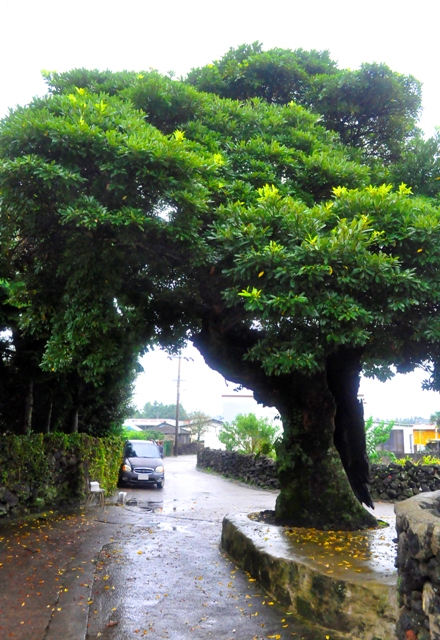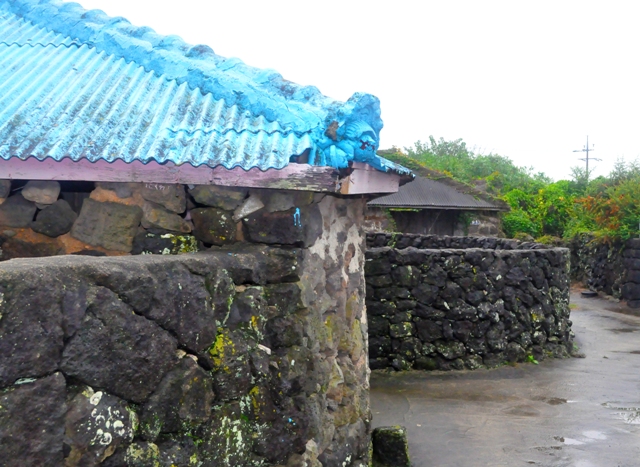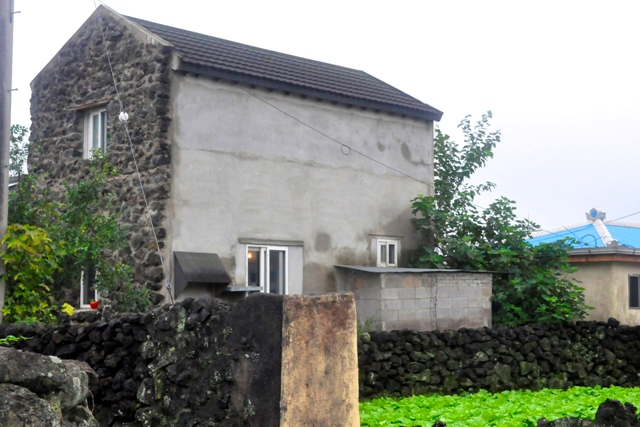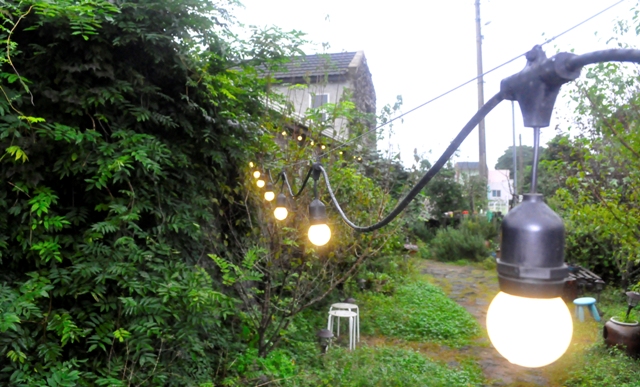| |
 |
|
| Seonheul's 폭낭 (pongnang), or village tree Photo by Justin Ferrell |
I remember the feeling. It was my first time in Asia, and Korea was an endless adventure. Every Kimbap Cheonguk was heaven and every FamilyMart felt like home! Things change, of course, and Korea changes even faster. FamilyMart is gone and I almost never go to kimbap restaurants anymore.
After a few years, the repetition of cellphone shops, convenience stores, and food chains began to feel like an endless cultural blur rather than an adventure. Neon lights, K-pop, and construction sites rushing past the window of my Korean experience. Progress and development is fun, but who was Korea, really?
Wandering away from all the noise, I began to appreciate this country’s backstreets and byways. Pleasantly intoxicating roads that stagger back and forth like a drunk between old houses with low roofs covered in ceramic tile. Neighborhoods where kimbap is still homemade and the local mart is run by a grandmother out of the front of her house. Where culture is still fermented, rather than manufactured.
Jeju has an abundance of such places. Small villages, or ma-eul (마을), each of which possess a wealth of local history kept alive under the shade of the pongnang (퐁낭), the village tree. Many villages on this island still have these revered symbols of community. You’ve probably driven by one or two on your way to a festival or to work. Quiet places, like Seonheul.
| |
 |
|
| ▲ The small streets and blue roofs of Seonheul's village life Photo by Justin Ferrell |
My friend Eunhae gave me directions in true country fashion: “Catch a taxi from Hamdeok beach and tell the driver you want to go to the old village tree in Seonheul. When you get out of the taxi, walk straight down the narrow street. You’re on the right path if you hear dogs barking on the left. Look for an extra furry cat.”
Eunhae is an artist and a teacher. She’s also one of the few art therapists in Korea who studied and trained in North America. She visited a friend of hers who lived in Seonheul about six and a half years ago and just never left.
“I wanted to live the good life,” Eunhae remembered, “that perfect balance, spending one-quarter of my time with friends, one-quarter alone, one-quarter working, and one-quarter making art. I found that here.”
Seonheul (선흘리) is located about twenty-five minutes west of Jeju City. It’s a village of around 700. Fewer if you don’t count the children who are adults now, visiting on weekends.
The core of this community is a tightly knit group of grandmothers and grandfather who have grown up together and grown old together. They have a lively and active community spirit. They get together regularly for round table meetings. As many as 150 residents will come out in a single evening to debate and vote on issues that affect their town. They are deeply concerned about one another, and about the village.
“I love this community,” Eunhae told me, “I love having my name yelled out when I go for a walk. Having fruits and vegetables heaped into my arms when I go over to say hello. We ask about one another. We know one another’s lives. Even me, an “immigrant” to Seonheul. Then again, I’ve made a point of joining the community. And I’m passionate about the forest.”
| |
 |
|
| ▲ Homes and houses from another era in Seonheul Photo by Justin Ferrell |
The people of Seonheul have very strong ideas about the environment. None of this first world nonsense where we think we’re stewards of valuable resources. No. For these people - many of whom were still carrying water from the local wetlands until municipal water arrived in 1970 - conservation is a matter of life or death. It’s an interconnected level of subsistence between nature and community that most of us will never know.
The history of these people’s lives is quite literally soaked into the earth around them. For instance, members of their community took shelter in the caves of Dongbaekdongsan forest during the April 3rd massacre. Many were eventually killed. It was the forest that sustained the survivors through the tragic events of that period. With food when their crops were taken; with wood when their village was burned down.
This history of death and rebirth is best captured in Seonheul’s pongnang, a tree named bulkannang (불칸낭). Roughly translated, bulkannang means “the tree that was burned down but was born again”. When Seonheul was destroyed, their village tree burned with it. And yet, as the people struggled to recover, seeds from the original tree sprouted on their own accord and grew up along the predecessors blackened trunk. Even today you can see how this apparently single tree is really two trees combined.
Like the people who nurtured this new growth, bulkannang depended on sunul-eum (수놀음), a Jeju word meaning “to take turns helping one another”. This idea saturates Seonheul, where the lives of the people, the trees, the animals and the very land all depend on one another.
| |
 |
|
| ▲ Stumbling across small cafes in Seonheul Photo by Justin Ferrell |
It’s wholly appropriate then, that in 2011 Dongbaekdongsan (동백동산) became one of twenty-two wetlands in Korea protected by the Ramsar Convention. Ramsar, named after the city in Iran where the convention was signed in 1971, is the “oldest multilateral international conservation convention” in existence, with over 160 countries participating to protect internationally important wetlands. The people of Seonheul have embraced this, becoming an ecovillage in name as well as in spirit.
I am humbled by Eunhae’s life, and speechless at the fortitude of the people in this village. As I grow older, I wonder more about the struggles and benefits of having this kind of community. Perhaps we have sacrificed important bonds in our great rush forward of the last century. Like Korea, we all seem to have lost touch with our roots in so many ways. Rushing past the events that help define us as a culture, as well as individuals. But not in Seonheul. Here, people help one another to remember, and to integrate the past into a process of renewal. I look forward to my next adventure in this place. |























